As we head into October the 1st of the month is International Coffee Day. It does appears there is an international day for everything, from nappies to fingernails – that’s the 5th of May if you are interested. However International Coffee Day HAS to be most people’s favourite. Who can honestly get through a morning without a little shot of that luxurious brown liquid, the nectar of the gods, the quintessential essence of modern day survival. So today’s blog is all about all things coffee, from the raw bean to the final cup of coffee you drink. Here at London Contemporary Towers we know how important coffee is to the functioning of a modern day office, so read on and see whether you can learn a thing or two, we certainly did!
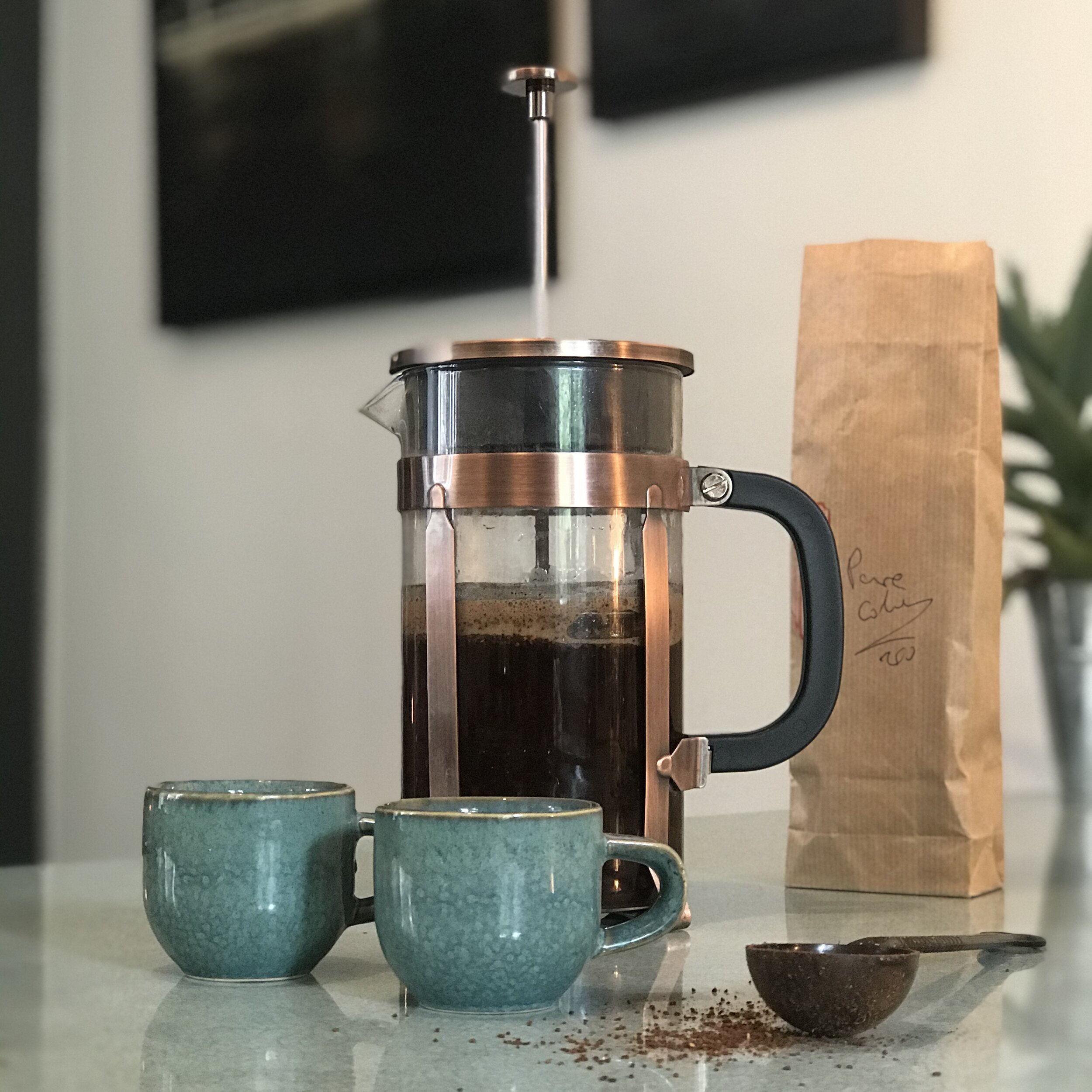
The Beans
Coffee really does grow on trees, after all who can forget that wonderful film “Out of Africa”. The story of Karen Blixen and her coffee farm at the foot of the Ngong Hills in Kenya. Originally they had decided to raise cattle but as the price of coffee was rising during the first world war they developed their farm as a coffee plantation instead. Coffee comes from over 20 countries in the world in an area of the world called “the bean belt” where coffee can be grown successfully. The lovely folks at Bibium (do check out their range of coffee machines!) have done the map below to help you know where your coffee comes from. Primarily this is in South and Central America, Africa, Asia and the Middle East . Coffee beans are from the Coffea species of plant and when the berries turn from green to bright red they are harvested, the beans extracted, dried and then sold to roasters. Depending on where the coffee comes from will depend on its flavour as well as how “dark” the roasting is.
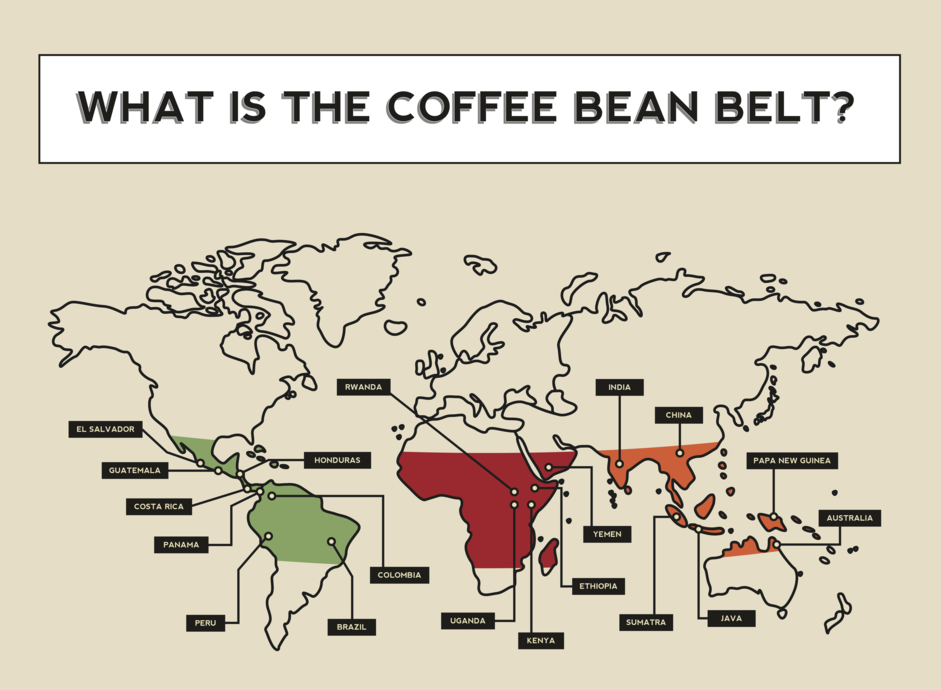
Image credit: Bibium
Roasting
Here at London Contemporary we are very fortunate as we have one of London’s oldest privately owned coffee roasters just down the road from us in Camden, the “Camden Coffee Shop“ on Delancey Street, Camden NW1 7NL (Tel 0207 387 4080). Owned by George Constinantou who took it over from his uncle back in 1979, he is now in his early 70s. He had come to London from Cyprus 10 years before. I often cycle past and can smell the roasting coffee beans and it is one of those smells that really is simply divine. The shop roasts its coffee on site to order, it is an oasis of roasting, smells and grinding. It has eschewed the modern coffee shop look in favour of old traditional rotating roasters, brass scoops and hessian sacks. The coffee shop is just reopening post lockdown so check opening times, BlankBoxCofffee managed to visit George in more usual times.
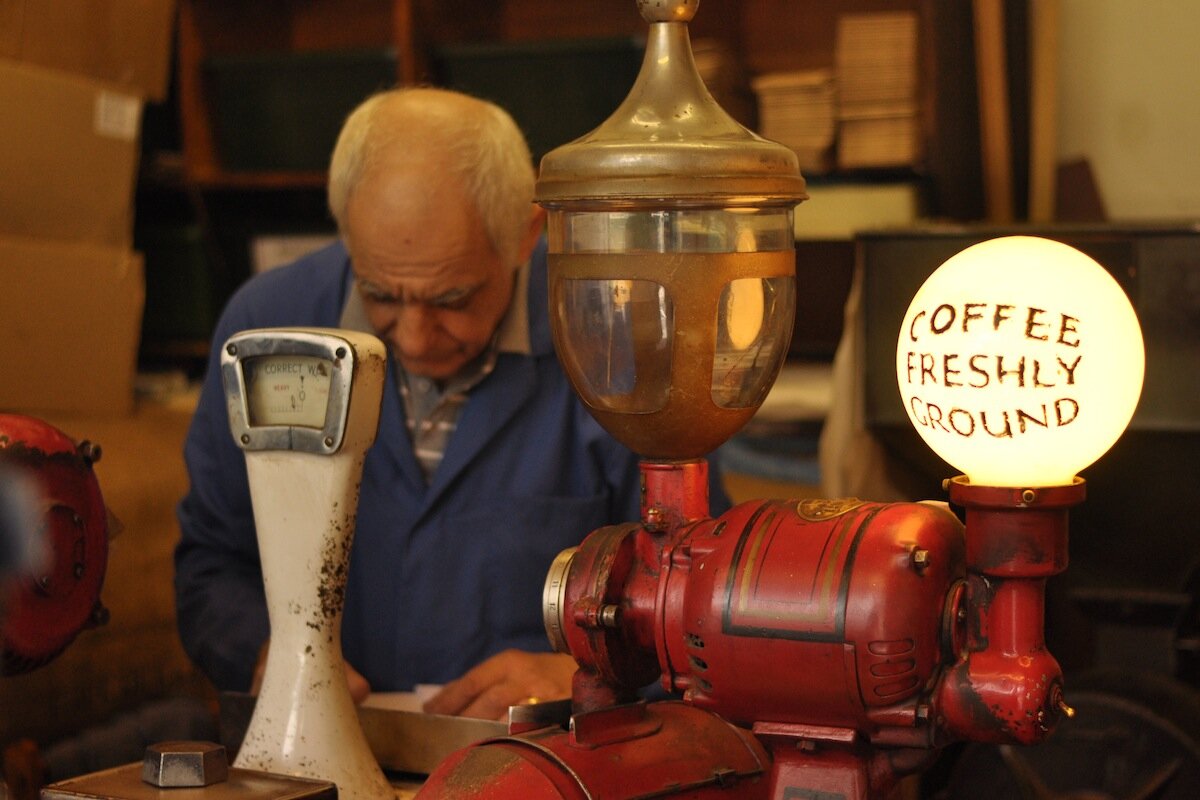
Image credit: BlankBoxCoffee
When the beans arrive, they are put into the small roasters where they are continually rotated and heated until they are done, how do you know when they are done, it’s all down to experience apparently and George certainly has lots of it. When they are done a wooden tray is placed under the roasting machine, a slide is opened and the roasted beans pour out. George is such a local figure that people like the BBC’s Robert Elms regularly frequents the shop for his coffee, articles and videos galore have been made. Here is one by the Camden New Journal, as they say a video tells a thousand words. The perfect place to buy your coffee beans, be they Kenyan, Columbian or form elsewhere, this is the place to go.
Grinding
Well you have your beans, all nice and snug in their protective packaging, they now need to be ground. Coffee is best not ground until you are ready to use it, as it loses its flavour, so a grinder is therefore needed. When I was a lad we had a hand grinder at home that my parents used for grinding the Coffee that they had bought at “Coffee Importers”. Hand grinding gives you the best flavour and does not damage the beans as much as electrical grinders which cut the beans rather than grind them and so the flavour is better able to flow out.
If you are buying a hand grinder then go for one that fits in with your kitchen décor. A traditional style one like this Tre Spade from Manufactum which would suit any country style kitchen perfectly and give you perfect coffee grounds every time. Or for the more modern style Timemore Chestnut by Coffee Box which look perfect in your contemporary kitchen design.
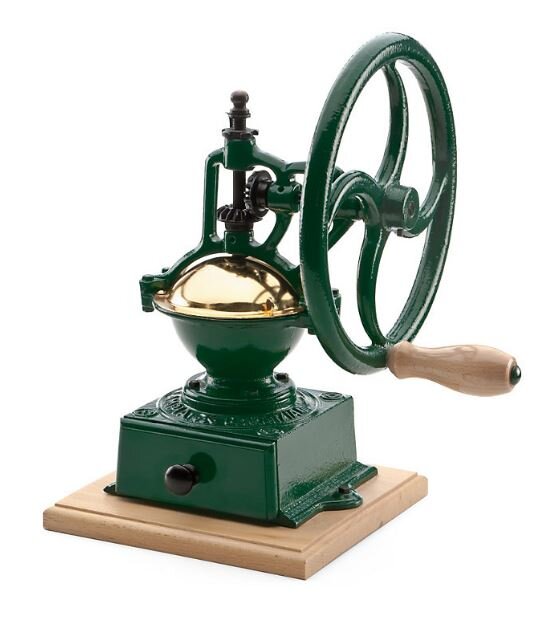
Image credit: Manufactum

Image credit: Coffee Box
Electric grinding is another possibility but as stated above it can damage the beans more, particularly with the blade type grinders which are nothing more than a liquidiser, care is required here. We particularly like these two little items, most electric grinders are naturally more contemporary in design than the manual grinders. The Wilfa Uniform Coffee grinder from Coffee Box has 41 settings so you are spoilt for choice on how fine or coarse you want you grind and with its stylish stainless settle exterior would suit the majority of kitchens.

Image credit: Coffee Box
For the more “coffee Shop” look how about the Hario V60 , again from Coffee Box, which with a grinding rate of 3gms / sec can grind you enough coffee for a cup in a little over 10 seconds and fully adjustable so you can have your coffee as course or fine as you like.
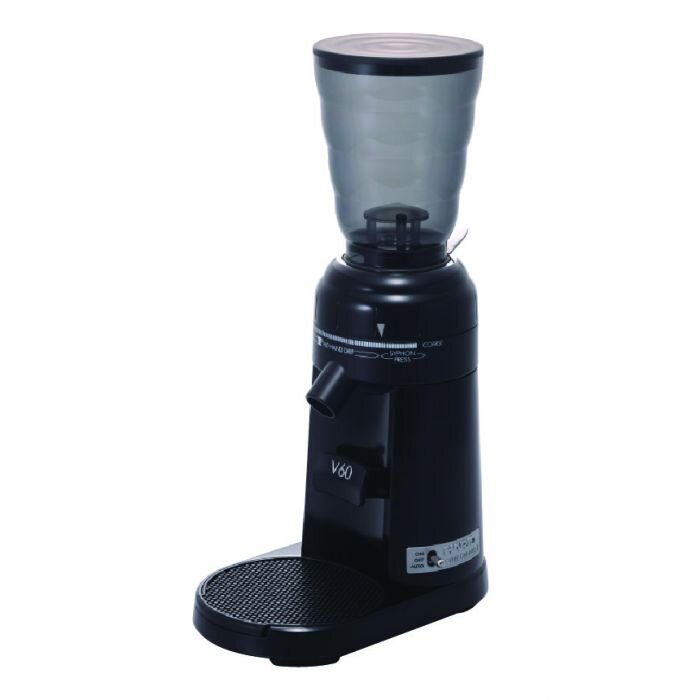
Image credit: Coffee Box
Making the coffee
So you have your beans, they are all nicely ground so now you need to add the hot water. There are SO many ways of doing this it really is untrue. You can have a Cafeteria, a percolator, a stove top coffee maker, a fancy espresso machine like in the coffee shops, the list goes on. However to our mind nothing beats turning up at the table with a pot full of glorious coffee so for us the fancy espresso machine is out.
If you are having a cafetierre it has to look good, after all they nearly all do the same, put in the coffee, and the hot water and push down. So there can only be one style, the classic glass jug, , you can of course vary whether it has metal straps and metal top or metal straps and a different top. We like the Hario Olive Wood Cafetierre from Coffee Box.

Image credit: Coffee Box
If you want to be very traditional you can use a moka pot. If you have ever had coffee in Italy or Spain you will probably have seen one of these devices, they really are the piece de resistance for traditional coffee making. Fill the bottom with hot water, put coffee in the middle and put on the stove, once heated you will have a perfect jug of coffee for your morning pick you up. We particularly like this one by Café Ole, available from Coffee Box, it makes 9 cups of Coffee, is stylish and the price won’t break the bank.
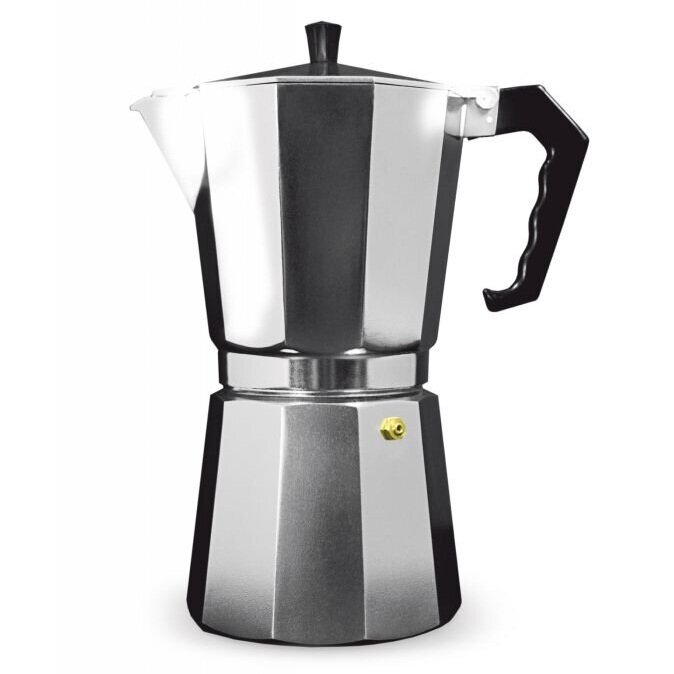
Image credit: Coffee Box
There you have it, now all you have to do is pour, add cream (if so desired), and savour that refreshing flavour. Personally I like cream with my coffee, it makes it slightly smoother, but no sweeteners allowed, we must watch our waistlines mustn’t we – and it just ruins the taste!
Happy International Coffee Day.